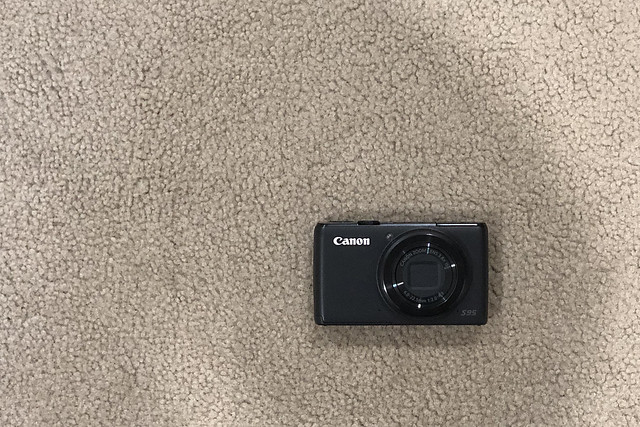For those who have been fortunate enough not to have needed to have a camera repaired, let me tell you that camera repairs are expensive!
During a shoot earlier this year, I mounted a lens and tele-converter onto my Canon EOS 5D Mark IV, and to my horror, found that the lens would not lock into place.
The small lens locking pin on the lens mount bezel was stuck inside the chamber, meaning that it would not return to its normal position, in which it is protruding from the bezel, thus holding the lens in place.
This is how it looks in its normal, working condition:

Canon EOS 5D Mark IV Lens Mount Assembly
I showed it to someone else who was at the shoot — someone who happens to work in the camera business — and he was able to fix it.
I thought nothing more about it until a few weeks ago, when I took the opportunity to photograph some corellas which had visited us. I mounted a lens and tele-converter onto my camera and began shooting.
After I had finished, I swapped the lens back to the lens that is usually kept mounted on the camera, and again to my horror, I found that the lens locking pin was stuck inside the chamber on the bezel.
I tried using gun oil and a toothpick, but to no avail; the pin was not coming out. I needed professional help.
I raised a support case with Canon, and received a case number and instructions on shipping the camera to Canon.
The Canon equipment repair process has changed considerably since I lasted needed an item repaired, in that there is no longer a service desk to which equipment can be personally delivered and later collected; instead, it needs to be sent via post or courier.
After a trip to the post office on a Friday, I returned with some packaging material, and an idea about what it would cost to post the camera with insurance. Given the cost to replace the camera — even though it is over six years old — it would have been foolish to post it without covering most of the cost to replace it, in the event that it was lost or damaged.
On the following Monday, I returned to the post office, after packing the camera well, and off it went. At this stage, I did not know what the repair cost would be, but from experience, I was not expecting it to be cheap.
Three days later I received a quotation from Canon, at which point matters got really interesting.
The quotation contained the following assessment:
“Upon inspection, found unit has been damaged by some form of external force, as evident by jammed locking pin on the lens mount.”
No, I do not think so. I am very careful with my gear, and the camera has never been dropped, bumped into anything, or otherwise struck by anything. It is in very good condition.
Anyway, next came the prices.
The parts needed were as follows:
- CB5-3546-000000 (MOUNT, BODYSUS) x 1 @t $32.48 each;
- CB3-8363-001000 (SCREW, M2X6.6SUS) x 4 @ $0.16 each;
- CB5-1845-000000 (PIN, LENS LOCK(MECH)SUS) x 1 @ $1.76 each; and
- CS5-0856-000000 (SPRING, COILS) x 1 @ $0.38 each.
Apparently I needed not only a new pin and the associated spring, but I needed an entirely new bezel and four screws in order to attach it to the camera.
The parts were pretty inexpensive.
However, the real cost came in the form of labour: a whopping $362!
Additionally, there was a $30 fee for return postage.
My estimate is that it would have taken 15 minutes at the most to remove the original parts from the camera and replace them with the new parts.
If Canon can charge $362 for 15 minutes worth of work to replace $35.26 worth of parts, then I am in the wrong business! I could have done the work myself if I had the parts.
I advised Canon that I wanted to proceed with the repair, and paid the invoice.
Canon repaired my camera and very promptly returned it to me. It was only away for a little more than a week. Additionally, Canon returned the original bezel, pin and spring.

Canon EOS 5D Mark IV Lens Mount Parts
Now I am back in business.
Canon’s total fee was $469.99, so combined with my up-front costs of $10.67 for packing materials and $143.95 for postage with insurance, the total cost of $624.61 made for an expensive proposition to replace $35.26 worth of parts.
The images that I have captured with this camera, on the other hand, are priceless to me.






